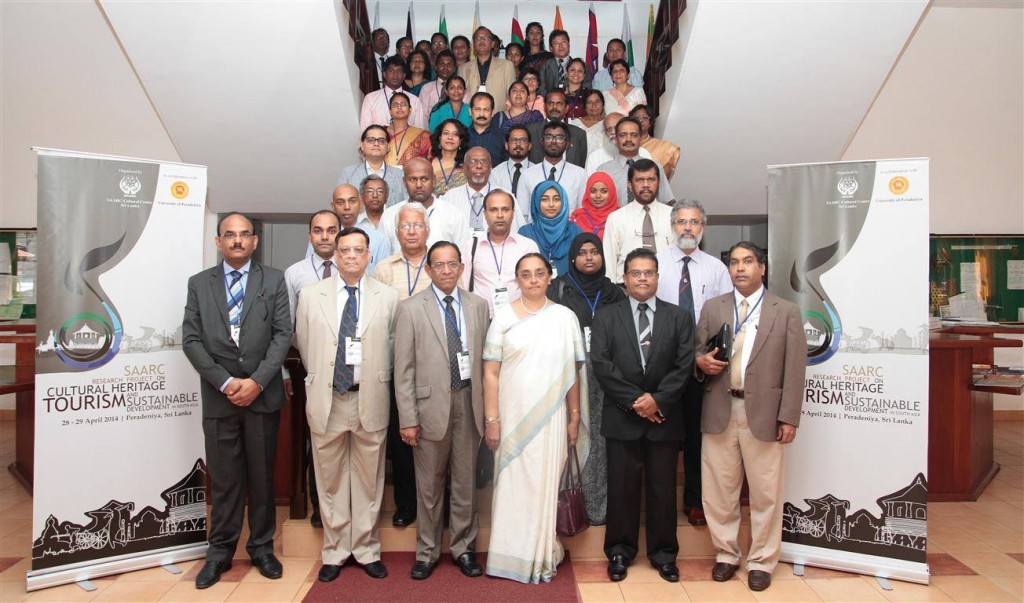
The Seminar was convened with a view to provide a platform to the academics and experts on the subject to discuss key issues, moot research questions and to identify themes and subthemes of Cultural Heritage, Tourism and Sustainable Development in South Asia that will merit independent and in-depth research.
Inaugural Session
The Seminar was inaugurated by Prof. Kshanika Hirimburegama, Chairperson, University Grants Commission of Sri Lanka. The Welcome Address was delivered by Mr. G. L. W. Samarasinghe, Director, SAARC Cultural Centre. Prof. Atula Senaratne, Vice Chancellor, University of Peradeniya, Sri Lanka addressed the gathering while Ms. Soundarie David Rodrigo, Deputy Director-Programme, SAARC Cultural Centre proposed the Vote of Thanks.
Academic Sessions
A total of fifteen research papers were presented in seven academic sessions spread over two days (28-29 April 2014). The sessions were along the following themes:
The Plenary Session
At the conclusion of the Academic Sessions, a Plenary Session was held on 29 April 2014 as a closed-door event with the participation of all Resource Persons and Chairpersons of the Academic Sessions. It was chaired by Mr. G.L.W. Samarasinghe, Director, SAARC Cultural Centre. The objectives of the Plenary Session were to consideration all suggestions submitted by the participants in Feedback forms, finalise of the Research themes/ topics for the purpose of inviting research proposals under the SAARC Research Programme on Cultural Heritage, Tourism and Sustainable Development (CHTSD) In South Asia (2014-15), and to review the Form/ Guidelines for the submission of the research proposals. The Plenary Committee perused all the Feedback forms received from the participants of the Seminar and various themes suggested therein were discussed in detail. Thereafter, the list was regrouped into three broad themes for the purpose of inviting the research proposals.
Recommendations:
The following research themes/ priorities and areas for Research on Cultural Heritage, Tourism and Sustainable Development (CHTSD) In South Asia are recommended by the Plenary Committee:
Valedictory Session
The Valedictory Session of the Seminar followed by a dinner hosted by the Vice Chancellor, University of Peradeniya was held at the Vice Chancellor’s Lodge, University of Peradeniya, Sri Lanka. Mr. G.L.W. Samarasinghe, Director, SAARC Cultural Centre and Prof. Atula Senaratne, Vice Chancellor, University of Peradeniya distributed certificates and mementos to all participants, paper presenters, delegates and Special Invitees of the Seminar. The event was also attended by other distinguished invitees from Sri Lanka.
Post-Seminar Tour
A full day post-seminar tour was organized for the participants of the seminar to Sigiriya on 30 April 2014.
Sigiriya is a UNESCO World Heritage Site and one of the archaeological wonders of Asia located in the Central Matale District of Central Province, Sri Lanka. It is famous for its frescoes, water gardens and graffiti. According to history King Kasyapa (477-495 CE) selected this site as his new capital and built his palace on top of this rock with colourful frescoes.
The transport for the post-seminar tour was facilitated by the University of Peradeniya.